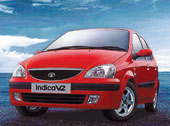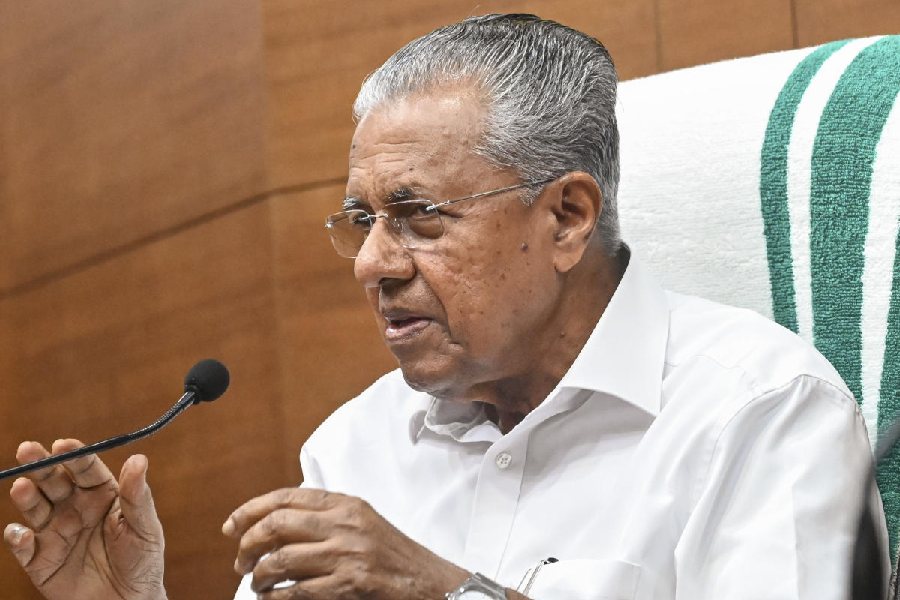 |
With a cavalcade of new marques and models being launched every few weeks, car-lovers have never been more spoilt for choice. Honda recently launched the all-new VTEC-engined City ZX. The very next day, it was the turn of India’s own homegrown manufacturer, Tata Motors to launch a new car. The company proudly presented its new offering ? a Tata Indica, well actually the model that is being currently exported to Europe. At first glance, it looks like a normal Indica ? the same body shape, grille, headlights and tail lights, as well as the same rear end. It measures 3675mm in length, 1485mm in height and 1665mm in width ? yes, the dimensions have not changed. What has, though, is the weight, which has been upped to 1,050kg from the previous 980kg. The natural inference would be then, a difference in the car internally.
But just what’s so different about it, that Tata Motors is pulling out all the stops to launch it as a new car? Take a closer look at the left-hand side of the hatch, just under the glass ? the little badge there reads ‘turbo’. What that means is that this new car has a new heart ? a brand new diesel engine with a turbocharger boosting the amount of air and therefore the amount of oxygen going into the combustion chamber. Engineers have, for decades, tried every trick in the auto book to coax more power out of engines. One way of doing this is to tune the intake side of the cylinder head to maximise airflow into the engine. Breathing, as this procedure is often referred to, results in a more responsive engine. However, there is a limit to what can be achieved this way and one popular option is to use ‘Forced Induction’.
This is where air is forced into the cylinders using a pump, which is either driven off an engine directly or driven by exhaust gas pressure. The former is known as a supercharger while the latter is called a turbocharger. The Indica engine now comes with a turbocooler mated with an intercooler. The intercooler lowers the temperature of the gas to provide a cooler charge, which is also denser, meaning it has a higher oxygen content too. The turbocharger in the new Indica cuts in quite early ? at 1800rpm. This enhances the low rpm torque and therefore makes for better low gear driveability. It also means that the Indica turbo is expected to move forward faster as traffic lights turn from red to green ? good news for those who regularly participate in traffic light GPs. However, the turbocharger-intercooler combination is not the only change in this Indica. Tata Motors says that NVH has been reduced thanks to a new clutch and so, its possible to get to the top speed easily without feeling like you’re at the wrong end of a pneumatic drill.
The 1.4-litre inline- 4 engine makes more power than before ? about 65bhp at 4500rpm and more importantly for those interested in acceleration, 13.5kgm or 130NM of torque at 2500rpm. That’s up from 54bhp and 85Nm of torque in the non-turbo diesel engine. The other specifications of the Indica are retained in this one too ? rack and pinion steering, five-speed gearbox, independent wishbone-type suspension with MacPherson struts at front and independent semi-trailing arm with coil springs over hydraulic dampers at the rear. The brakes are of the usual dual-circuit type, diagonally split so that in case of a failure in one circuit, the other will continue to function and offer some amount of retarding effect instead of a total loss of braking. The front brakes are ventilated discs while the rear brakes are of the drum type. Tyres are radials of course ? 165x65 R14.
 |
| Tata Motors Senior Vice President, Rajeev Debe, Head of Car Products, S. Krishnan and Tata Car Regional Manager North, Anupam Singh (left to right) pose with Tata Indica V2 Turbo Diesel during a launch for the new model in New Delhi |
Besides some internal restructuring, though, little else has changed in the new Indica. I’m talking about the poor quality (in comparison to the exterior of the car) plastic used inside ? especially the fascia. Its poor finish is such a contrast to the fancy exterior. The new Indica turbo models come in three colours ? Arctic Silver, Oasis Green and Cherry Red. The ex-showroom prices in Delhi for this car, model designations DLG T and DLX TC, are Rs 4, 10,211 and Rs 4,30,118 respectively.
Other non-turbo models are also available and start at Rs 3,34,780 for the base DL version. All in all, though, the new Indica is a smart looking car and the Cherry Red version in particular, will surely attract a lot of buyers. This new offering is going to please the diesel-driving enthusiast both in terms of performance as well as in terms of fuel economy ? if however, you’re willing to compromise on the quality of the interiors.
My first car
 |
Samir Soni
model-actor
I am not really that big on cars. For me, a car is a vehicle of necessity and utility. However, I do remember my first car, a 1988 model Fiat, with much amusement. It was a hand-me-down from my brother after I passed out from school. He had just bought his new car, so I took over the Fiat. I remember it was greyish in colour.
Back then, I didn’t even have a license but I drove it around Delhi quite a bit. Now my car had the uncanniest habit of breaking down at the most inopportune of moments. For instance, I recall a particularly embarrassing experience associated with my first car. One winter evening, I was out on a long romantic drive with a date. Suddenly, the car decided to start playing up — in fact, it broke down. And there I was in a sticky situation, as I couldn’t really ask my date to push the car. These small goof-ups aside, I didn’t face any other trouble from the car — probably it helped that I had it for just one year!











